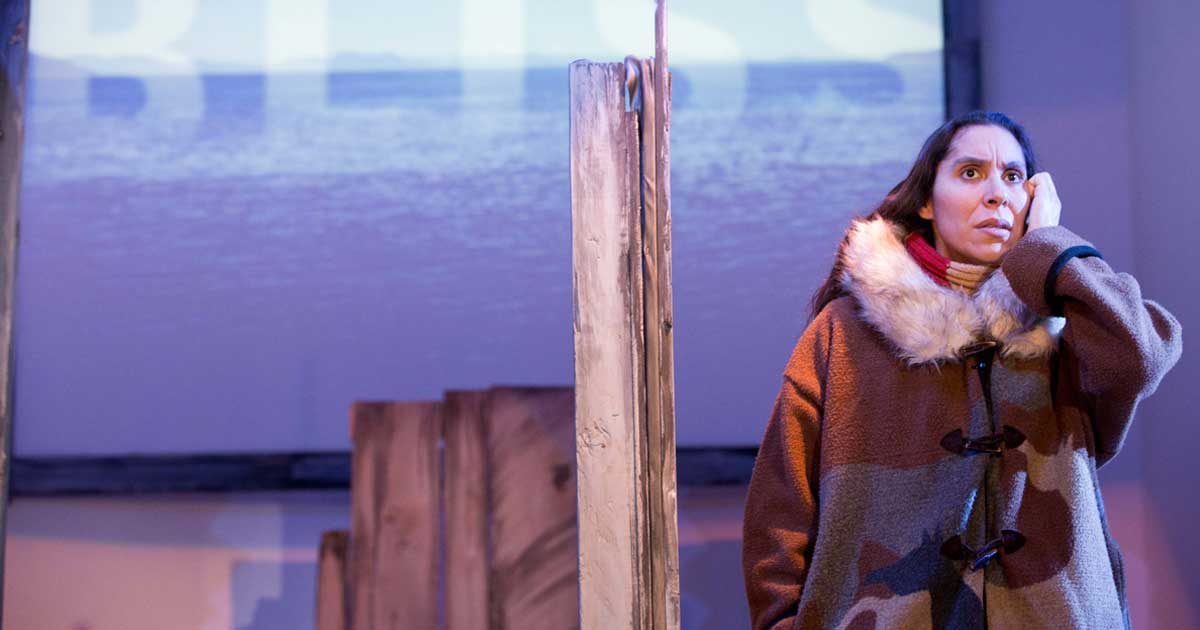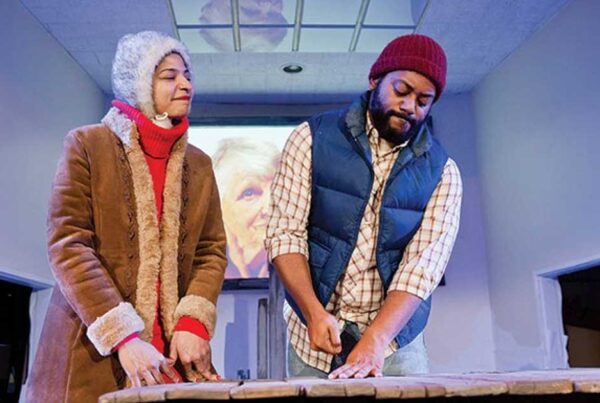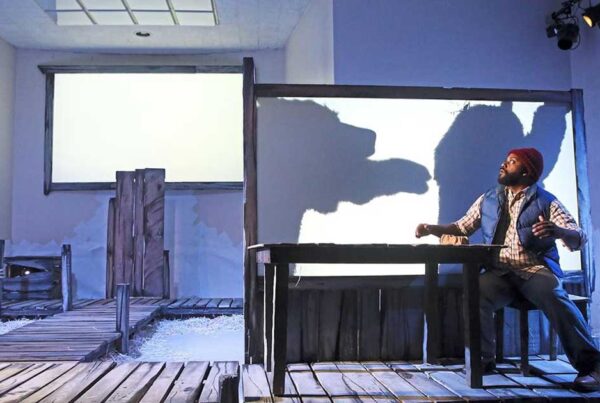
The Pittsburgh Tatler – The arts community has been engaged in recent years in a trenchantly political conversation about (as the Hamilton lyric puts it) “Who tells your story?”
That’s also a question playwright Gab Cody grapples with in her new work, Inside Passage, as she seeks to uncover a story from her own family history that takes her down a path fraught with representational peril.
The story she seeks to tell, you see, is of her efforts to locate a pair of Native American siblings, Eddie and Sharon, who had joined Cody’s family as foster children during her early childhood in Alaska. When Cody’s parents’ marriage fell apart and her mother decided to return to California, Eddie and Sharon were removed from her family and sent to live with relatives in the Tlingit community. Four decades later, Cody set out to find out what happened to them, documenting both her preparations and the search itself on film. Inside Passage, the first manifestation of the results of that documentation, is a hybrid of theater and film that seeks to capture both Cody’s emotional, psychological, and geographical journey as she reconnects with these long-lost temporary members of her family, and Eddie and Sharon’s harrowing struggles with poverty, abuse, and neglect as indigenous children in the foster system.
Trepidation seems to haunt Cody at every phase of her journey, and rightly so. In the first place, going into the project she could have no certainty that she would be able to locate Sharon or Eddie, and no idea how they might respond to her overtures if and when she did. To exorcize that anxiety, Cody and director Sam Turich wrote and filmed a series of wry “preenactments” of potentially awkward first encounters between Gab and her long-lost siblings, with actors from the ensemble standing in for herself and for Sharon and Eddie, producing a film version of the kind of scene that plays out in your head when you imaginatively prerehearse a much-anticipated event.
In the second place, Cody’s task of telling this particular family story is complicated and vexed by the gulf between her own life experience, as a privileged white woman with social and geographical mobility, and the highly circumscribed experience of her Tlingit foster siblings. She addresses this trepidation with humor and theatrical flair, by turning the tables on herself and assigning her own self-representation to her diverse cast of actors, who bounce the role of “Gab Cody” between themselves like a volleyball. By ceding the embodiment of her voice to others, Cody acknowledges her own hesitancy to appropriate the stories of people whose experience she can never fully know: the (deliberately confusing) fracturing of the writer/storyteller into many bodies and voices both destabilizes her authority and empowers non-dominant voices to guide the narrative. It’s a move that seeks to cede this story, which Cody seems to fear is not fully hers to tell, back to the subjects to whom it belongs.
The question of “ownership” of the privilege to tell a story is also foregrounded in an interlude in which Tlingit actor Skyler Ray-Benson Davis interrupts Cody’s narrative to share a legend about Jeet, a boy who climbs a cliff to save his village. At the end of that tale, Davis expresses his thanks to the Wooshketaan Tlingit clan of Hoonah for lending him their story to share, a gesture that reminds us that a) stories have value as cultural currency, and b) there is a material and ethical difference between borrowing a story to share, and stealing one to sell…




